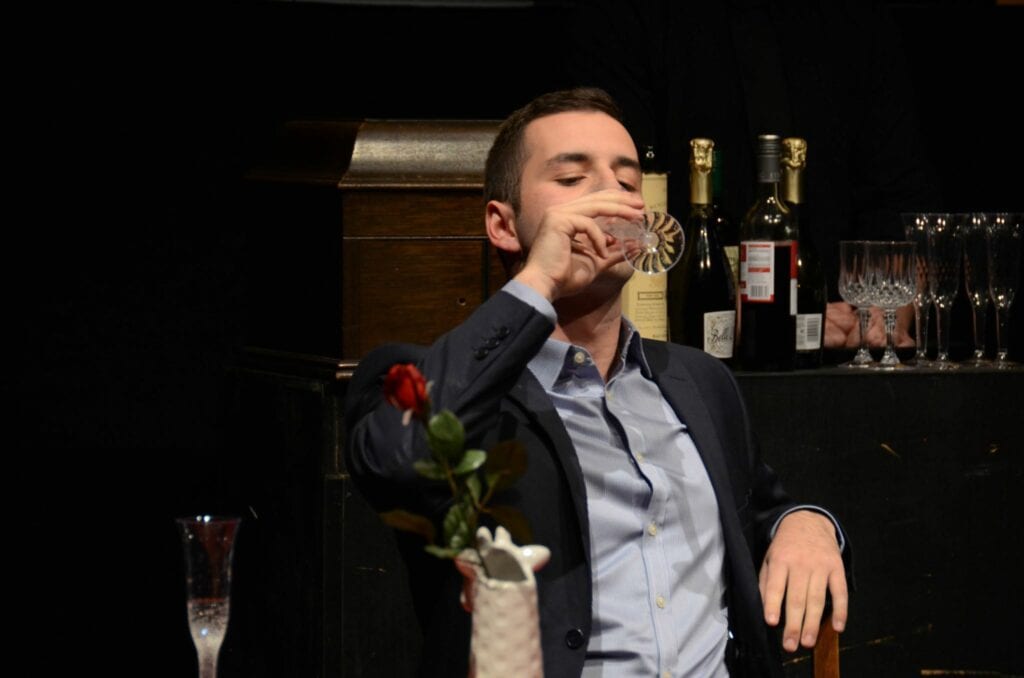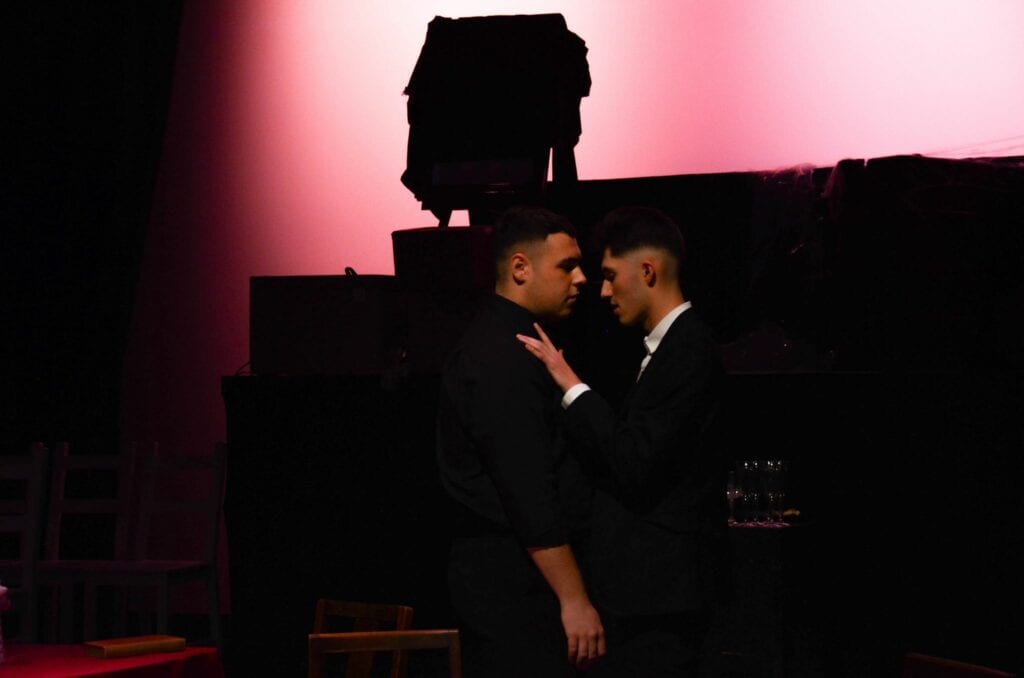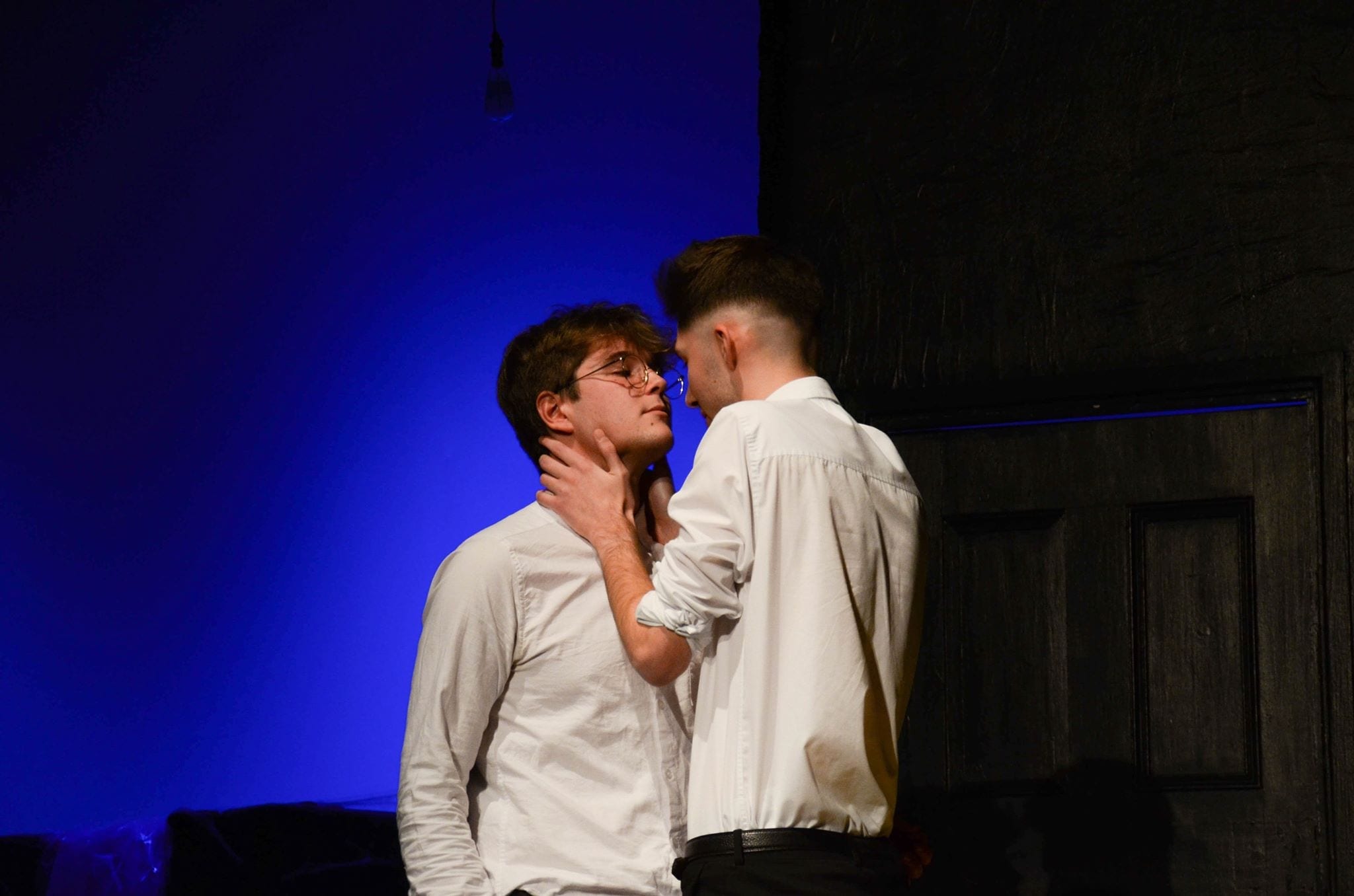The Picture of Dorian Gray is arguably Oscar Wilde’s most meaningful work, and almost certainly his most well-known. I am happy to say that this adaptation, which was staged by Theatre Group in Stage@Leeds this week, is testament to the timeless nature of the issues broached by Wilde in his novel. By choosing to adapt Wilde’s gothic, the writer and directing team, Eve Walton and Morgan Hartley, took a risk, but it most certainly paid off. As well as being an exciting example of what theatre can be, it was a spectacularly enjoyable show.
The plot follows Dorian Gray (played by Tom Gibson); a spectacularly attractive, young dilettante whose wish to remain young forever is granted as he begins to spiral into a life of hedonism and sensuality. After selling his soul, it is mysteriously imparted into a portrait, painted by his part-time friend and part-time lover, Basil Hallwood. (Played by Toby Oldham.) As Gray’s behaviour and attitude to life becomes increasingly twisted and narcisisstic, the portrait slowly becomes grotesque and aged, whilst he never changes. Unforgettably, Dorian’s occasional qualms with his lifestyle are shushed and dismissed by his enigmatic friend, Harry (played by George Marlin), as the people around Gray become obsessed, eventually killing themselves, or being murdered. The tale ends when the protagonist attempts to destroy the portrait, shortly after he decides to try and make amends for his wicked ways.
What I found most impressive about the show was not the often faithful interpretation of Wilde’s original text, or even the performance of its magnificent leads… It was the subtlety with which the mood and atmosphere of the show slowly changed. For some time I, and the audience, were laughing raucously. (Memorably, Marlin’s impeccable delivery of the line: “There are only five women in London worth having a conversation with, and two of them used to be men!“) Eventually, scene by scene, the show slowly changed. After a few scenes, I realised that nobody had laughed for quite some time; the show had completed a transformation from an exorciating, hilarious criticism of the kind of amoralism that permeates the young rich, into a serious interrogation of what privilege allows certain groups to get away with- and the mechanisms through which they do so. Perhaps most striking, in a world dominated by headlines drawing attention to the behaviour of the likes of Harvey Weinstein, is how well it captured the very real cost of this kind of behavior; the suicide of Sybil Vane (played by Flo Ridley), and its reverbarations throughout her community, was haunting.

One memorable technique for achieving this appears during a particularly harrowing scene in which Gray is left alone in his room. Rather than choosing expositional, direct dialogue, the passage of time and the suffering of those Dorian Gray has hurt is expressed through a collection of increasingly desperate voicemail messages. I thought that this moment was really innovative and, combined with the talent on show from the actors who had voiced the pleas, really highlighted the potential that modernisations of classic stories can have. Unfortunately, this was one of relatively few examples of the show really making maximum use of the modern setting; it would have been interesting to see it explored to a greater extent.
The play, in true Theatre Group style, managed to push the boundaries of traditional shows in other ways, too. One scene, depicting Gray’s promiscuity during his hedonistic years, makes full use of the theatre’s lighting (designed by Ell Johnson) and music to tell a story through physical theatre. As far as expressions of sex on stage go, this is by far one of the best methods I’ve seen. Therefore, my congratulations have to go out to the choreographer, Aimee Cross. What’s more, the scene ended with a line from the novel that has gone on to become a relatively well-known quote amongst Wilde’s fans: “Everything is about sex, except sex. Sex is about power.”

The line was powerfully delivered during a captivating performance of sexuality by the show’s lead, Tom Gibson. Never failing to perfectly capture the emotion of his character at the time, be it panic, sorrow or simply callousness, Gibson gave an outstanding interpretation of one of literature’s most complex characters.
The same can be said of the actor portraying Harry- George Marlin. Though his character’s emotion never strayed far from a kind of disaffected arrogance, we saw a stark contrast at the end of the play when he talks himself out of being a suspect in Gray’s death, demonstrating Marlin’s incredible versatility as an actor.
The cast as a whole was fantastic and they all deserve a mention, but in order to prevent this review from becoming a long list of names, I will stop with Flo Ridley, playing Sybil Vane, whose gut-wrenching heartbreak was as convincing as her initial adoration for Dorian Gray.

Whilst the run of this show is now over, the cast and crew are all worth keeping an eye on. Until their next work, we can but hope that The Picture of Dorian Gray will return.
Words by Charley Weldrick
